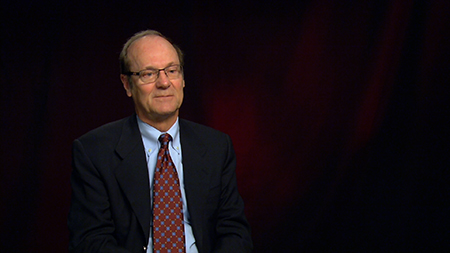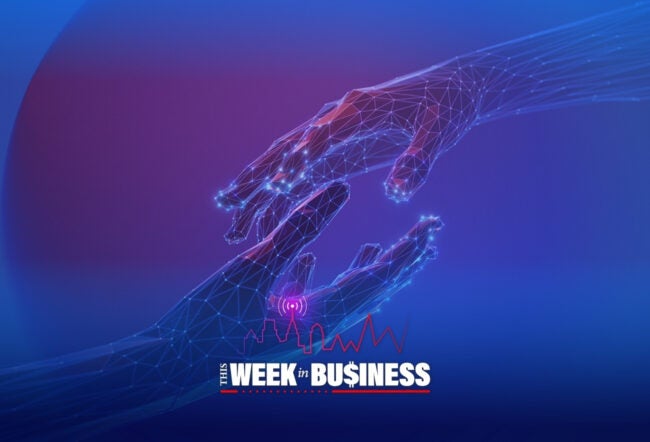How did IBM, General Electric and other companies become growth leaders? Why is it that some companies lag behind — and stay behind? Those are the questions that Wharton marketing professor George S. Day explores in his book, Innovation Prowess: Leadership Strategies for Accelerating Growth. Recently, Day spoke with David Heckman, practice leader, senior management at the Wharton School’s Aresty Institute of Executive Education, about why innovation prowess is the key to growth leadership.
An edited transcript of the conversation follows.
David Heckman: I’m here with professor George Day to interview him about his new book, Innovation Prowess. George, welcome to Knowledge at Wharton.
George S. Day: Thank you, Dave. I’m very excited about sharing my thinking on my new book, Innovation Prowess. I’ve been working for over 25 years to understand what distinguishes consistent growth leaders — that is, companies that grow organically with their own resources — from growth laggards. I’m looking at growth leaders like IBM, Samsung, LEGO and companies of that caliber to try to discern over many, many years, what sets them apart. The answer comes in two parts. Firstly, they have what I call growth-seeking discipline. This resonates with Peter Drucker’s notion that innovation is a skill, just like learning the piano, that you build when you practice and invest a lot of time. It’s a replicable and disciplined skill.
But that’s only half the story. You have to marry growth-seeking discipline with innovation ability. Innovation ability [means being] risk-tolerant and experimenting…. [It includes] the organizational ability to innovate. Growth leaders really invest heavily in understanding their markets. They are very, very good at open innovation, partnering and sharing. They do a lot of experimenting. They don’t feel they have the answers, but they’re going try a lot of different things. They’ll follow that mantra of “start small, but think big.” Fail fast, and scale quickly, if you get it right.
Growth leaders get ahead of the laggards — and they stay ahead. The laggards are always catching up. There are two parts: discipline, plus ability. That’s what I mean by innovation prowess.
Heckman: Fabulous. Many senior leaders really can’t see their way to achieve next year’s growth objectives. How can innovation prowess help them?
Day: That’s a great question. I think it can be understood through a question that a research study posed a few years back to senior officers of a whole array of global companies. The result they found was that only 29% of this sample of senior executives was very confident that they could reach their ambitious organic growth objectives. I have shared this with many, many executive teams and executive program participants. They all get it. They say, “Well, what about the other 70% who are only somewhat or not at all confident they could reach their growth objectives?” They can give me dozens of reasons. Imbedded in those reasons about why there’s a lack of confidence comes the pathway to building prowess.
For example, I hear a lot of explanations around short-term-ism: The demand for short-term performance drives long-run investments, a lack of leadership commitment, a lack of discipline and being reactive. We see an awful lot of explanations around the unwillingness to make long-term investments. If we do make them, the short-term profit pressures pull the resources back out of the long-term to meet short-term demands from the sales force, from the customers. These are all important. But they take away from the growth engine.
Lastly, and perhaps most interesting, people are very averse to the big risks that come from substantial innovation. I’ve arrayed all of these on a spectrum between what I call small-i and BIG-I innovation. Small-i is what you have to do to stay in the game. These are upgrades, new versions, the next generation of technology. But you’re still in your same business, and you’re simply staying competitive. BIG-I is breakthrough, blue ocean. I’ve done a lot of research through Wharton’s William and Phyllis Mack Institute for Innovation Management. We have a pretty good sense of just how risky these are. You’re looking at 85% to 90% failure rates in the BIG-I end of the spectrum.
What we have learned, and it’s consistent with what other researchers and consultants have found, is the sweet spot is really adjacencies. That is, they are adjacent in terms of drawing on your technology base, your production prowess and so forth. They also are adjacent in that they leverage your brand, so your brand promise means something. You have some understanding of the market. You know how to get to the market, and the channels and so forth are important. We focus a lot on maintaining consistent focus on these adjacencies as the real growth engine.
Heckman: Any advice you can offer about allocating capital and resources toward BIG-I and small-i innovation? I think there’s a lot of confusion about where to invest and how to align with strategy.
Day: That is a question that has both a short-term and a long-term answer. In the short run, the research is fairly consistent in showing that companies that want to grow above the industry rate probably invest 70% into what I’ll call the small-i innovations. That’s what you have to do to stay competitive and to meet the needs of channel partners and customers. Between 10% and 20% are on this area of adjacencies. That’s the initial resource allocation.
The problem is, many companies start out that way. But they start sucking resources back from the riskier adjacencies and BIG-I innovations in order to fund the short-term stuff and to meet the short-term profit targets. The allocation often starts out in an optimal fashion, but then it loses that focus. You now are not investing as much as you should. We’re seeing this played out in a lot of organizations, which allow the operating managers control over long-term BIG-I innovations and adjacencies.
Now, that’s not all bad. But, let’s look at the story of Procter & Gamble. Recently, they have not had anywhere near the past track record in breakthrough innovations that they used to have. If you trace that back, this is their diagnosis: Some years ago, Procter & Gamble gave the operating managers, the division general managers, control over the innovation budget. Inevitably, the short-term pressures won out. Contrast that with GE, where Jeff Immelt has had imagination breakthroughs for many years now. These are big, big projects, like getting into batteries, which is not a business they have been in before. He personally, through a strategic fund, invests in those. But more importantly, he’s watching those constantly. Every time he goes into a business, he’s got with him a dossier on an imagination breakthrough that this company — or this division — should be working on. Management commitment is sustained. Resources are sustained. They don’t get siphoned off into short-run issues and opportunities. That’s the way you stay in the game. You have discipline in finding these big opportunities, and then you have the ability to stay committed and focused.
Heckman: That’s great, George. The late Apple CEO Steve Jobs once said, “Don’t let the voice of others drown out your own internal voice.” How do you connect that with outside-in versus inside-out thinking? How do you reconcile that balance within the organization’s innovation process?
Day: The distinction between outside-in and inside-out is a question of where you start. That’s true in designing competitive strategy, or an innovation strategy, and carrying that out. By outside-in, I mean you start with the market and the latent needs, frustrations and problems that the customers have. But you also start with the competitors and where they are. You’re looking for innovations that create new value for customers that they are willing to pay for. That’s the outside-in perspective. You’re standing in the shoes of the customers, who, by the way, won’t be able to tell you what the product looks like. They can tell you vividly about their frustrations and their problems. If you think about Apple’s breakthroughs, they are often built upon the inadequacies of, say, mp3 players. The iPod was a brilliant example of understanding why the 15 companies with mp3 players weren’t getting anywhere. It was a terrible experience. Steve Jobs saw that. He had the vision with his team, and of course, he spent an enormous amount of time with his design chief. They are really thinking through every piece of that customer experience to deliver superior customer value.
That’s the outside-in perspective: keeping in mind the customer’s experience, satisfying their latent needs and trying to anticipate them. But, you have to mesh that…. You also have to have powerful inside-out capabilities. You need to have mastery of the technology, and you have to have the engineering skills, the production skills, the supply chain skills. It’s a question of where you start. If you start off with just the technology, looking for a solution, you won’t get there.
Heckman: Great. Thanks, George. You describe in your book that it’s somewhat counterproductive to frame the choice between organic and inorganic growth, rather than finding the right balance. Can you talk a little bit about that?
Day: The book is, first and foremost, about growth leadership defined as superior rates of organic growth — that is, with their own resources. The distinction I draw here is with inorganic: mergers, acquisitions and so forth. But these, in fact, are highly complementary. So, let’s think about Cisco. They view their innovation alternatives along a spectrum, starting with build. To build it is organic growth. The other end of the spectrum is buy: You buy access to a market. They are masterful at acquiring and integrating firms.
But along this spectrum, if you think about all the things they do, they have what I would call closed innovation — everything is done in-house. With open innovation, they have a lot of partners. They are very good at partnering. But they have internal incubators, which are independent of the rest of the organization. That’s halfway along the spectrum. Then, they have external venture groups, or venture partners that they invest in. Then, finally, mergers and acquisitions. But even an acquisition can be in service of an organic growth strategy. Because you may want to use that small toehold acquisition to get insights into a market or to buy a technology you don’t have. By the way, IBM is another company that is masterful at making these kinds of acquisitions, in service of organic growth.
It’s misleading to distinguish sharply and say it is either-or. In fact, it’s both. In fact, it’s all of them. You just have to figure out how ambitious your growth aspirations are and then how much you’re willing to invest in each of these areas.
Heckman: Thanks, George. In the book — one of the centerpieces of the book, in fact — is the 14 innovation pathways. In closing, can you just talk a little bit about what those are, what inspired you to develop them, and how they can help organizations drive their innovation?
Day: This is a good way to pull things together. We have discipline on one side and ability on the other. In the discipline piece, you have to have an aggressive growth strategy that really signals your aspirations. Second, part of that discipline is what I’ll call divergence. So, you’re casting a pretty wide net, looking for attractive growth opportunities. You want not just what comes to you. That’s a reactive approach. But, you’re aggressively seeking growth opportunities. The last step in this disciplined approach to growth-seeking is convergence, where you select the best and you aggressively screen out.
Back to full-spectrum innovation: Where does one look? I’m talking about active looking, not just passive, waiting for ideas to come to you. The notion of full-spectrum innovation has 14 growth pathways in it. I created these growth pathways by essentially decomposing strategy into two parts: the value proposition and the business model. [There are] different pathways to expand and elaborate your value proposition, [and others] are equally feasible for business model innovation, including different ways to generate and capture value.
This work really does build on the shoulders of many others. A lot of work we have done at the Mack Institute. But work by organizations like IDEO and people like Clayton Christensen have all contributed to my understanding of what the possible pathways are. I’ve also applied them with many of my clients. My clients are the first ones to tell me, by the way, whether I’ve got a good idea or not. That’s the discipline I live with, and I’ve been very fortunate to have really, really demanding, interesting and challenging clients.



